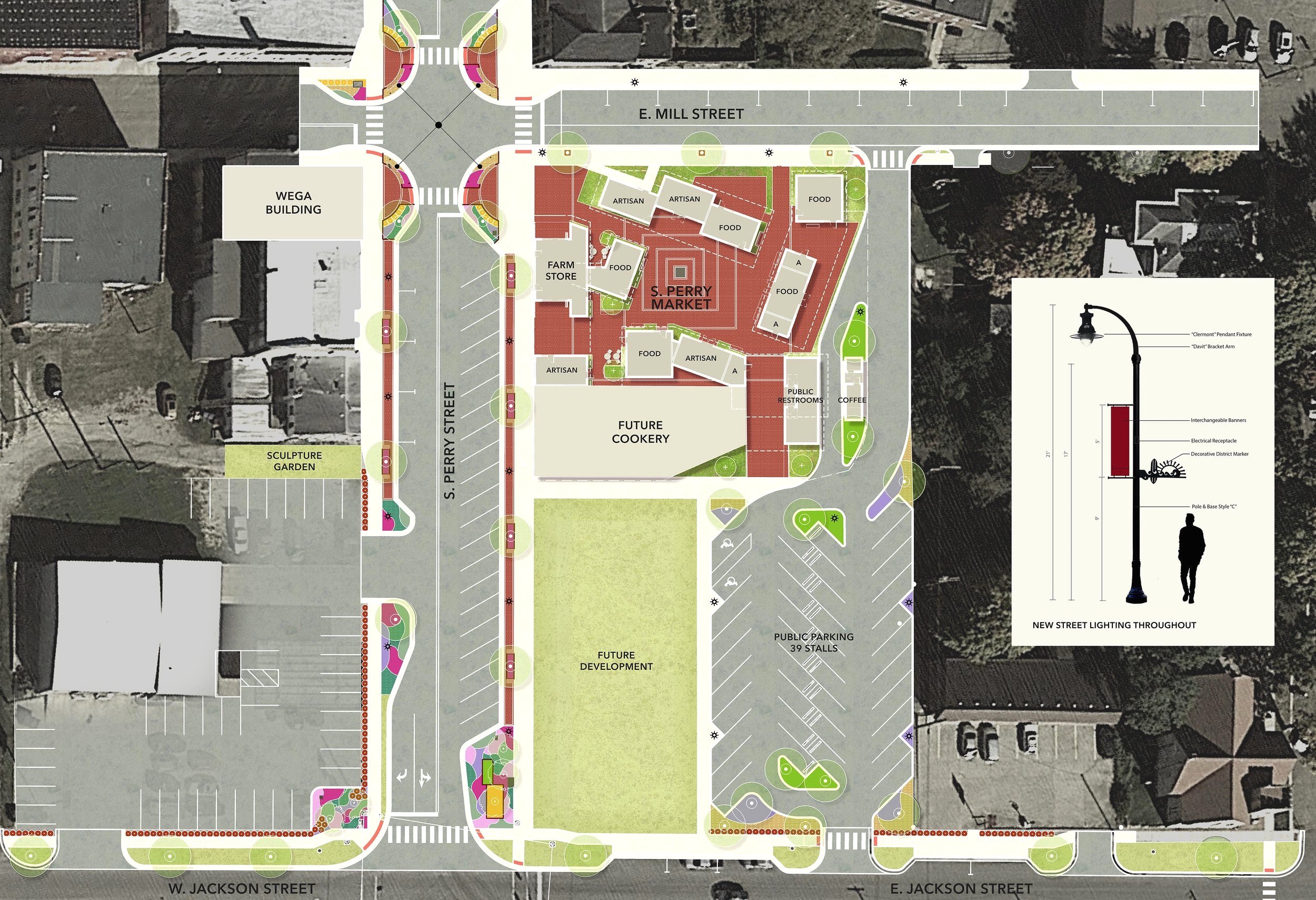Revitalizing Downtown
Revitalizing downtown improves community identity, quality of life and cultural attraction.
Revitalizing downtown also helps build a more flexible workforce, create competitive small businesses and a more resilient local economy. WEGA is working with government agencies, professional consultants, developers, educational institutions and community non-profits to bring much needed change.
We recognize the regional interdependency of rural and urban communities for a shared economic future. To that end it is important to invest in rural downtowns and support local business growth so that all may participate in the future. Revitalizing downtown puts a face to the community and plays a crucial role in economic resilience.
The role of small businesses in rural recovery, downtown revitalization and long term resilience.
Due to systemic disadvantages such as access to capital and fluctuations in the market rural small businesses need local solutions to survive. The key to downtown revitalization is a small business resurgence. And the key to that is local nurturing environment of empowerment, shared resources and a focus on innovation and competitiveness.
The role of built environments in rural recovery, downtown revitalization and long term resilience.
Rural communities are challenged with under-built or decaying built environments. This acts as a barrier for residents and small businesses to sustain viable businesses or grow new ones. This has direct implications on the quality of life and economic reliance of rural communities.
The role of downtown revitalization in strengthening social cohesion and attachment to place.
Depopulation threatens economic opportunity in rural areas and magnifies long-standing divisions of income. The challenge becomes maintaining places where people want to live and work. Rural Main Streets can’t achieve economic revival without fostering cohesive social environments. Downtowns project a community’s identity, and enhance residents’ attachments to place.
The role of regional planning strategies to support development and identify demand strategies towards downtown revitalization.
Community-based development efforts in rural areas are often isolated from regional economic development strategies, which can harm both people living in rural communities as well as broader regional economies. Creating a shared vision for rural resilience through regional strategies is a more productive path.
Masterplanning
Masterplanning downtown revitalization is a multifaceted endeavor. Each downtown and culture is unique and requires unique solutions. Although many historic downtowns suffer similar challenges the act of reinventing requires careful consideration. The ultimate goal, of course, is to make changes that drives social and commercial demand and leads to a more vibrant cultural and commercial core.
The Attica example of revitalization planning looks at the cultural shifts, demographic changes, community needs and future potential to arrive at specific solutions and priorities.
Through various planning exercises the community decided to pursue a social-entertainment district focus and connected to the riverfront rather than focus solely on a downtown street. The 200 Block Enhancement Project and associated Regional Business Incubator are the first projects to launch as a result of this plan.
Downtown Attica 200 Block Street Enhancements
Physical enhancements along with business development and cultural attraction all work together to reinvent downtowns. To reinvent Attica’s downtown district we used all of the techniques listed under the “More” button. The plan includes a new two-way street access, more street parking, a new public parking lot, a new Regional Business Incubator, new educational and office uses, new rotating retail stores and civic events, a new public plaza with relating sculptures and art, new sidewalks, paving and extensive landscaping, and new street lighting and outdoor dining venues.
Successful efforts to revitalize downtowns are multifaceted however many include improving the built environment through reconstruction and new programming. Some of the strategies commonly used include (In no particular order):
1. Improve Access
Turn One-Way Streets into Two-Way Streets - One-way streets are efficient for auto traffic flow but hinder pedestrian activity and building access. Two-way streets create a more comfortable environment for pedestrians and increase property demand.
Improve Parking - To compete with rural and suburban experiences urban center need ample parking within a reasonable walking distance to services.
2. Support Business Activity
Support Local Entrepreneurs and Business Development - Encouraging small businesses and startups contributes to a diverse and thriving downtown ecosystem.
3. Increase Demand
Promote Mixed-Use Development - Combining residential, commercial, and recreational spaces fosters vibrancy. Adaptive reuse of old buildings can transform them into relevant solutions that serve community needs, thus driving demand.
4. Increase Attraction Frequency
Encourage Regularly Occurring Activity - Ongoing activity creates positive awareness and brings people from across the area to the heart of the community, showcasing unique amenities.
5. Improve Cultural Relevancy
Promote Culture Initiatives - Cultural events and creative spaces help grow cultural identity and connection.
6. Improve Walkability
Invest in Green Spaces and Walkable Streetscapes - Parks, plazas, and pedestrian-friendly streets enhance the urban experience.
7. Enhance the Evening Experience
Improve the Lighting Infrastructure - Well-lit streets provide a sense of safety and enhance the evening experience and activities.
Streetscape Features
Landscaped Intersections
Adding gardens to the urban pedestrian experience improves environmental comfort, interest and overall attraction.
Historic Lighting Feature
With reference to historic photos pendent light fixtures will hang over the center of the two main downtown intersections.
Planter and Bench
Raised planters provide a physical and psychological buffers for pedestrians, frequent bench seating and axillary power.
Dense Groundcovers
To provide a rich pedestrian experience landscaping throughout is edge to edge, dense and lush.
Pavers
Brick pavers provide a rich pedestrian experience and a historical nod to Attica’s Poston Paver manufacturing heritage.
Flowering / Seasonal Trees
Landscaping that changes with the seasons provides pedestrians with visual variety, interest and beauty.
Landscape Palette
Tiny Wine Ninebark
Karl Foerster Feather Reed Grass
Swamp White Oak
Summer Beauty Allium
Rosenwein Salvia
Ovation London Planetree
Fire Cheif Arborvitae
Walker’s Low Catmint
Katsura Tree
Little Bluestem ‘Standing Ovation’
Calamintha Nepeta
Armstrong Gold Maple
Project Team
WEGA worked with several professional groups on behalf of the City of Attica to produce this solutions. Construction starts Spring 2024.

























